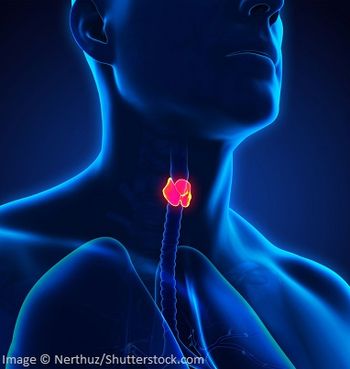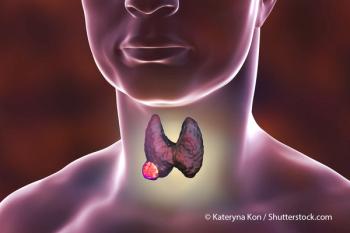
ATA Updates Guidelines for Differentiated Thyroid Cancers
Release of newly revised, evidence-based clinical management guidelines for thyroid nodules and differentiated thyroid cancers were announced at the 85th Annual Meeting of the ATA.
Release of newly revised, evidence-based clinical management guidelines for thyroid nodules and differentiated thyroid cancers were announced at the 15th International Thyroid Congress (ITC) and 85th Annual Meeting of the American Thyroid Association (ATA) in Lake Buena Vista, Florida, and
“Thyroid nodules are a common clinical problem, and differentiated thyroid cancer is becoming increasingly prevalent,” the new guidelines state. “Since the American Thyroid Association’s guidelines for the management of these disorders were revised in 2009, significant scientific advances have occurred in the field.”
The ATA Guidelines Taskforce on Thyroid Nodules and Differentiated Thyroid Cancer authored the guidelines. The Taskforce was chaired by Bryan R. Haugen, MD, of the University of Colorado School of Medicine in Aurora, Colorado.
The revised guidelines “inform clinicians, patients, researchers, and health policy makers on published evidence relating to the diagnosis and management of thyroid nodules and differentiated thyroid cancer,” the authors wrote. “They represent, in our opinion, contemporary optimal care for patients with these disorders.”
The updated guidelines reflect advances in the interpretation of biopsy and the use of molecular-marker studies in the clinical differentiation of benign thyroid nodules from thyroid cancer, risk assessment, cancer screening, the management of benign thyroid nodules, and the diagnosis and the initial and long-term management of differentiated thyroid cancer.
“The revised guidelines for the management of thyroid nodules include recommendations regarding initial evaluation, clinical and ultrasound criteria for fine-needle aspiration biopsy, interpretation of fine-needle aspiration biopsy results, use of molecular markers and management of benign thyroid nodules,” the authors wrote. “Recommendations regarding the initial management of thyroid cancer include those relating to screening for thyroid cancer, staging and assessment, surgical management, radioiodine remnant ablation and therapy, and TSH suppression therapy using levothyroxine.”
For long-term management of differentiated thyroid cancer, the recommendations include guidance for surveillance for recurrent disease using medical imaging and repeated serum thyroglobulin testing; thyroid hormone therapy; and management of recurrent and metastatic thyroid cancer.
The guidelines also identify needed additional research and recommendations “for clinical trials and targeted therapy.”
Thyroid nodules are commonly seen, with high-resolution ultrasound detection rates reaching 68% of randomly selected patients. In between 7% and 15% of patients, thyroid cancer is present, risk for which varies depending on the age, sex, family history, and radiation exposure history of the patient. Differentiated thyroid cancer includes papillary and follicular thyroid cancers, and represents more than 90% of all thyroid cancers.
The United States saw an estimated 63,000 newly diagnosed cases of thyroid cancer cases in 2014, up sharply from 37,200 in 2009, when the ATA guidelines were last revised.
“The yearly incidence has nearly tripled from 4.9 per 100,000 in 1975 to 14.3 per 100,000 in 2009,” noted the revised guidelines authors. “Almost the entire change has been attributed to an increase in the incidence of papillary thyroid cancer (PTC). Moreover, 25% of the new thyroid cancers diagnosed in 1988–89 were < 1 cm compared with 39% of the new thyroid cancer diagnoses in 2008–9.”
This tumor shift “may be due to the increasing use of neck ultrasonography or other imaging and early diagnosis and treatment, trends that are changing the initial treatment and follow-up for many patients with thyroid cancer,” the authors wrote, noting one recent population based study on the doubling of thyroid cancer incidence since 2000, which found the increase to be “entirely attributable to clinically occult cancers detected incidentally on imaging or pathology.”
Newsletter
Stay up to date on recent advances in the multidisciplinary approach to cancer.















































































